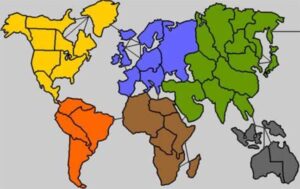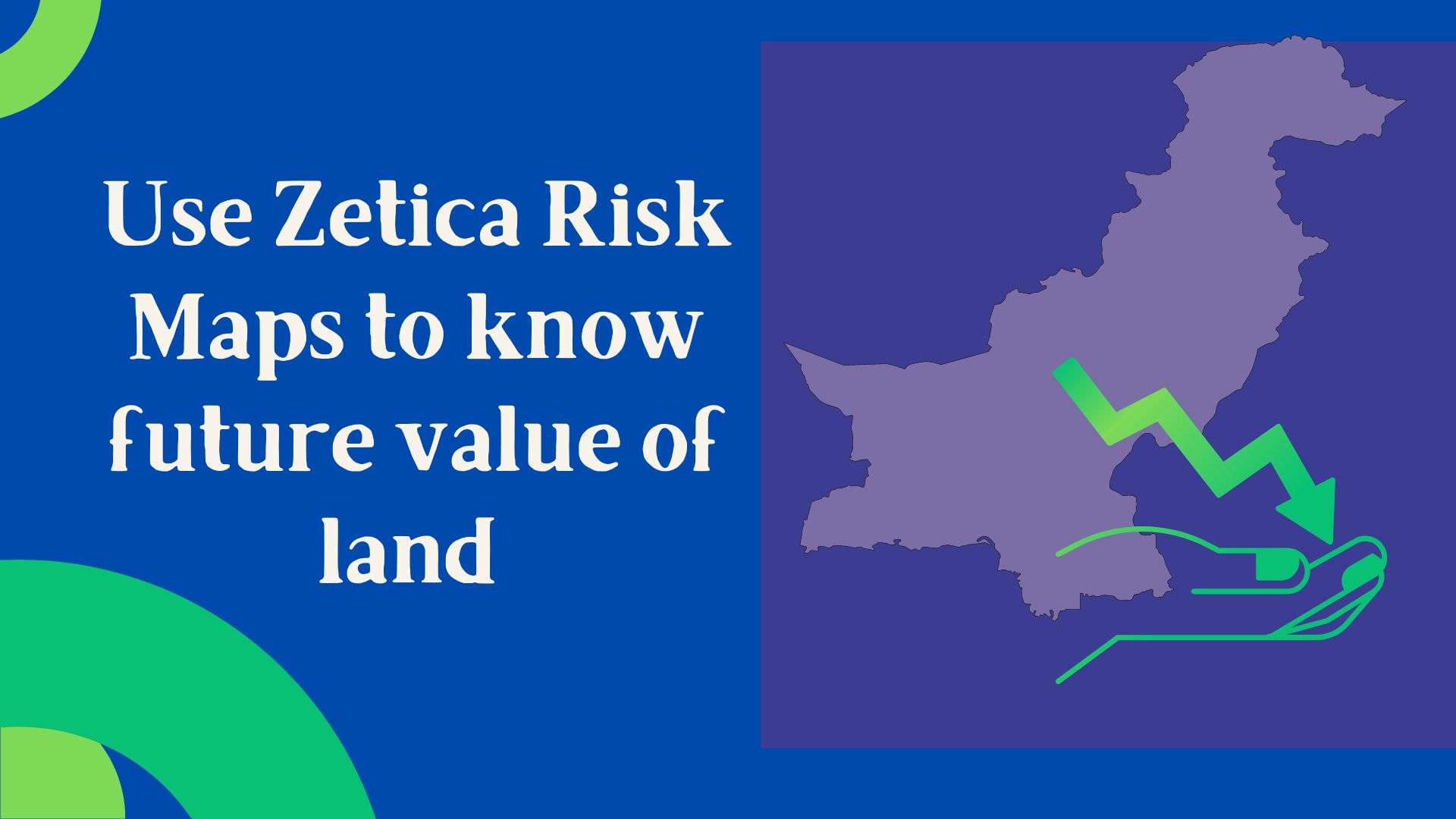Do you want to know what will be the long-term value of the land before investing in it? Are you planning to buy a house but are unsure about the location, and the resale value it will fetch you in the later years? Zetica Risk Maps is the solution here. Geohazards and environmental risks can have a significant impact on the safety, stability, and profitability of buildings, infrastructure, and other assets. In order to manage these risks effectively, it is essential to have a clear understanding of the geological and environmental conditions at a particular location. This is where Zetica risk maps come in.
Table of Contents
What are Zetica Risk Maps?
Zetica is a UK-based company that specializes in advanced geotechnical and environmental risk assessment services. Using state-of-the-art technology and proprietary algorithms, Zetica creates risk maps that help clients identify and manage potential geohazards and environmental risks. These maps display a wealth of information about geological and environmental conditions, including soil types, geology, ground stability, flood risk, and more.
What Information is Displayed on Zetica Risk Maps?
Zetica risk maps display a wide range of information about geological and environmental conditions that can impact the safety and stability of buildings and infrastructure. This information includes:
1) Soil Types
Zetica risk maps display information about the type and thickness of soil at a particular location. This information is important because different types of soil have different properties that can impact the stability of buildings and infrastructure. For example, sandy soil is typically more stable than clay soil, which is more prone to landslides and subsidence.
In order to make informed decisions about the safety and stability of a particular location, it is important to understand the type of soil that is present. For example, if a construction project is located on soil that is prone to landslides, it may be necessary to implement additional mitigation measures, such as retaining walls, to ensure stability.
2) Geology
Zetica risk maps also display information about the underlying geology at a particular location. This information can help to identify potential risks associated with geological features, such as faults, sinkholes, and rock formations.
For example, if a construction project is located on a fault line, it may be necessary to take additional precautions to ensure the safety and stability of the structure. This could include selecting alternative locations, implementing additional mitigation measures, or conducting additional site investigations.
3) Ground Stability
Zetica risk maps display information about the stability of the ground at a particular location. This information can help to identify potential risks associated with ground instability, such as landslides, subsidence, and soil liquefaction.
For example, if a construction project is located on ground that is prone to landslides, it may be necessary to take additional precautions to ensure stability. This could include selecting alternative locations, implementing additional mitigation measures, or conducting additional site investigations.
4) Flood Risk
Zetica risk maps also display information about flood risk at a particular location. This information can help to identify potential risks associated with floodings, such as damage to buildings and infrastructure, and the impact on human health and safety.
For example, if a construction project is located in an area that is prone to flooding, it may be necessary to take additional precautions to ensure the safety and stability of the structure. This could include selecting alternative locations, implementing additional mitigation measures, or conducting additional site investigations.
5) Environmental Risks
In addition to geohazards, Zetica risk maps also display information about environmental risks, such as air and water pollution, soil contamination, and waste management.
For example, if a construction project is located in an area that is contaminated with hazardous substances, it may be necessary to take additional precautions to ensure the safety of workers and the environment. This could include selecting alternative locations, implementing additional mitigation measures, or conducting additional site investigations.

How to use Zetica Risk Maps?
Zetica risk maps are designed to be used by professionals in a variety of industries to identify and manage potential geohazards and environmental risks. Here are some steps for how you might use Zetica risk maps:
- Identify your goals: Before you start using Zetica risk maps, it’s important to have a clear understanding of what you hope to achieve. This could include identifying specific risks or hazards, prioritizing mitigation measures, or simply gaining a better understanding of the geotechnical and environmental conditions at a particular location.
- Access the maps: Zetica risk maps are typically accessed through a secure online portal or by using specialized software. You may need to create an account or have access to the maps through your organization.
- Navigate the maps: Once you have access to the maps, you can use a variety of tools and features to explore the data and view the risk information. This may include zooming in and out, panning, changing the base map, and overlaying additional data layers.
- Analyze the data: Zetica risk maps display a wide range of information about geological and environmental conditions, including soil types, geology, ground stability, flood risk, and more. You can use this information to identify potential risks and to evaluate the impact of different mitigation measures.
- Make decisions: Based on the information displayed in the risk maps, you can make informed decisions about how to manage the risks and hazards associated with your project or location. This may involve implementing mitigation measures, selecting alternative locations, or taking other actions to minimize the risk of harm.
By using Zetica risk maps, you can gain a better understanding of the geotechnical and environmental conditions at your location and make informed decisions to minimize the risks associated with your project or assets.
How to read Zetica Risk Maps?
Reading Zetica risk maps requires an understanding of the different elements and symbols used to represent geological and environmental hazards. Here are some general steps to help you understand how to read these risk maps:
- Familiarize yourself with the map legend: The map legend is a key element of any risk map, as it provides information on the symbols and colors used to represent different hazards and risks. Take some time to review the map legend and understand what each symbol represents.
- Identify the area of interest: Zetica risk maps typically provide information for a specific area, such as a city, region, or site. Identify the area of interest on the map and focus your attention there.
- Identify the hazards: Once you are familiar with the map legend, look for the symbols and colors that represent the various hazards and risks. For example, you may see symbols for areas that are prone to flooding, earthquakes, or landslides.
- Interpret the map: Use the information provided in the map legend and your understanding of the area to interpret the map. For example, if you see a symbol for a high-risk flood zone, you can assume that the area is at a higher risk of flooding and take appropriate precautions.
- Evaluate the risks: Once you have interpreted the map, use the information to evaluate the risks associated with a specific site or area. Consider the likelihood of a hazard occurring, the potential consequences, and the measures you can take to mitigate the risks.
Zetica risk maps are complex and can contain a lot of information. It may take some time to fully understand and interpret the maps, especially if you are unfamiliar with the hazards and risks represented. If you are having difficulty reading the map, consider reaching out to the Zetica support team for assistance.
How to avoid losses in investing in the wrong land by using Zetica Maps?
Investing in the wrong land can lead to significant losses, and using Zetica risk maps can help you avoid these losses by providing critical information on the hazards and risks associated with a specific area. Here are some steps you can take to avoid losses when investing in land using these risk maps:
- Conduct thorough research: Before investing in land, conduct thorough research to understand the risks associated with the area. Use Zetica risk maps in conjunction with other information, such as site assessments, historical data, and local knowledge, to get a complete picture of the risks.
- Consider the limitations of the maps: Zetica risk maps have certain limitations, as discussed above, and it is important to take these into account when interpreting and using the maps.
- Consider the future: When investing in land, consider the future potential of the area and the potential risks associated with the area. For example, a site located in a flood zone may not be suitable for development.
- Regularly review and update the maps: Zetica risk maps are a snapshot of the risks associated with a specific area at a specific point in time. Regularly review and update the maps to reflect changes in the area, such as new development or changes in land use, which could affect the risks.
- Work with a trusted advisor: Work with a trusted advisor, such as a real estate agent or a land surveyor, to understand the risks associated with a specific area and to identify any potential hazards.
Note: It is important to understand that using Zetica risk maps does not guarantee that you will avoid losses when investing in land, as there are many factors that can affect the value and potential of a site. However, by using the maps in conjunction with other information and taking appropriate measures to mitigate the risks, you can reduce the impact of the risks and avoid significant losses.
Benefits of Zetica Risk Maps
Zetica risk maps offer a wide range of benefits to individuals and organizations working in construction, engineering, real estate, and government. Some of the key benefits of these maps include:
- Improved safety: By providing detailed information about geohazards and environmental risks, Zetica risk maps help to improve safety by identifying potential hazards and allowing professionals to take appropriate mitigation measures.
- Better decision making: Zetica risk maps provide a comprehensive view of geological and environmental conditions, which can help professionals to make informed decisions about the safety and stability of assets.
- Reduced costs: By identifying potential risks early on in the planning process, these risk maps can help to reduce costs by allowing professionals to take appropriate mitigation measures before construction begins.
- Increased efficiency: By providing a detailed view of geological and environmental conditions, Zetica risk maps help to streamline the site investigation process and reduce the time and resources required to complete a project.
Limitation of Risk Maps
Like all tools, Zetica risk maps have certain limitations that should be considered when interpreting and using the maps. Here are some of the common limitations:
- Limited data: Risk maps are based on available data, and the accuracy and completeness of the data can affect the accuracy of the maps. The maps may not contain information on all hazards and risks, or the information may be outdated or inaccurate.
- Scale: Risk maps typically provide information at a specific scale, and the level of detail may not be sufficient for certain purposes. For example, a map showing hazard zones for a large city may not provide enough detail for a specific site or building.
- Uncertainty: Risk maps are based on complex models and algorithms, and there is always some level of uncertainty associated with the results. The maps may not accurately reflect the true likelihood of a hazard occurring, and the consequences of a hazard may be difficult to predict.
- Limited perspective: Risk maps provide a snapshot of the risks associated with a specific area at a specific point in time. The maps do not take into account changes over time, such as new development or changes in land use, which could affect the risks associated with an area.
- Bias: Like all models, these maps are based on assumptions and can be influenced by bias. For example, the maps may be based on historical data that may not accurately reflect current conditions or the algorithms used to generate the maps may be influenced by certain assumptions or biases.
These limitations are not unique to Zetica risk maps and are common to all types of risk assessments and models. It is important to consider the limitations of the maps when interpreting and using the maps and to take appropriate measures to mitigate the risks.
Conclusion
In conclusion, Zetica risk maps are a valuable tool for professionals working in construction, engineering, real estate, and government. By providing detailed information about geohazards and environmental risks, these maps help to improve safety, support better decision-making, reduce costs, and increase efficiency. Whether you are planning a new construction project, assessing the stability of existing assets, or simply looking for a more comprehensive view of geological and environmental conditions, These risk maps can help you to achieve your goals.

